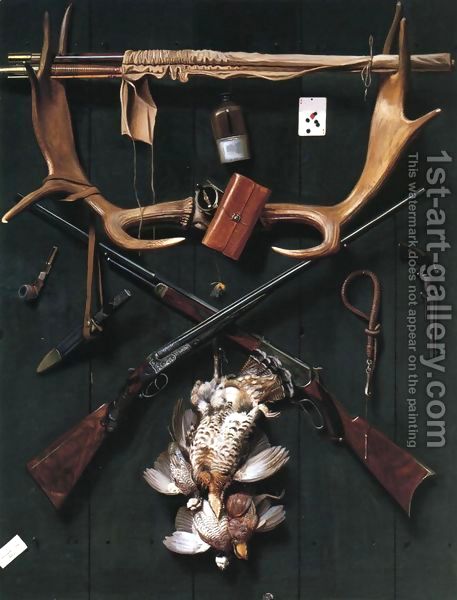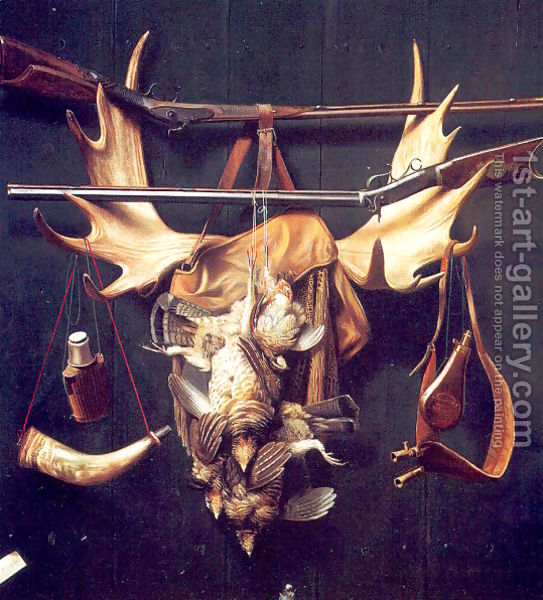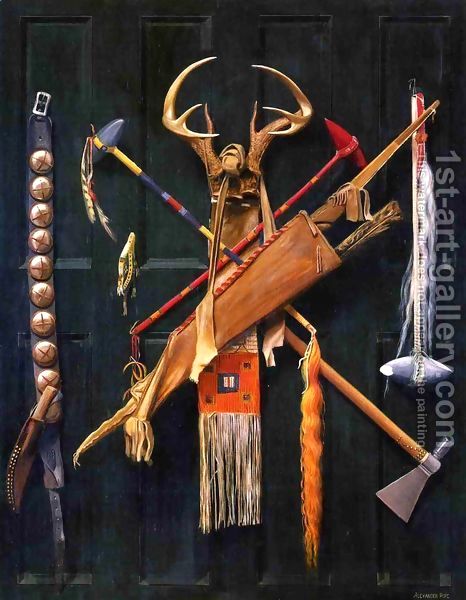I was in Crystal Bridges the other day. Crystal Bridges is the art museum that Alice Walton started here in Bentonville Arkansas. It is art by American artist only.
It has some great art. It has a painting from 1675 of an Native American (Indian) camp in Virginia.
Anyway I noticed a painting from 1905 and it kind of tickled me. People think that once the cartridge gun was invented that muzzle loading guns just vanished. Fact is they were used for a long time and well into the 20th century.
Here is a painting from 1905. Do you notice how the top shotgun is a muzzleloader and in good working condition.

Title: Trophies of the Hunt
Artist: Alexander Pope, 1849 - 1924
Date: 1905
Here is the 1675 painting.
Title: Indians of Virginia
Artist: James Wooldridge, ca. 1635 - ca. 1695
Date: ca. 1675

Label Text: Wooldridge spent his career in London and never himself encountered Native Americans. Indians of Virginia is a composite of vignettes from several engravings of Carolina Algonquians made by Theodore de Bry in 1590. De Bry’s images, in turn, were based on watercolors by John White, who is best known today as the governor of the lost colony of Roanoke. As the first published account of European exploration, De Bry’s illustrations were influential in both establishing widespread notions of what people in America were like, and generating enough interest in the New World to fund future voyages. Although inhabitants were presented as exotic, savage, and mysterious, the depictions also looked reassuringly familiar to Europeans. These images emphasized complex and sophisticated cultures, differentiated the status of individuals, described apparel and weapons, and showed organized religion and agriculture. Further, the artists posed standing and reclining figures in familiar positions based on established Renaissance models.
It has some great art. It has a painting from 1675 of an Native American (Indian) camp in Virginia.
Anyway I noticed a painting from 1905 and it kind of tickled me. People think that once the cartridge gun was invented that muzzle loading guns just vanished. Fact is they were used for a long time and well into the 20th century.
Here is a painting from 1905. Do you notice how the top shotgun is a muzzleloader and in good working condition.

Title: Trophies of the Hunt
Artist: Alexander Pope, 1849 - 1924
Date: 1905
Here is the 1675 painting.
Title: Indians of Virginia
Artist: James Wooldridge, ca. 1635 - ca. 1695
Date: ca. 1675

Label Text: Wooldridge spent his career in London and never himself encountered Native Americans. Indians of Virginia is a composite of vignettes from several engravings of Carolina Algonquians made by Theodore de Bry in 1590. De Bry’s images, in turn, were based on watercolors by John White, who is best known today as the governor of the lost colony of Roanoke. As the first published account of European exploration, De Bry’s illustrations were influential in both establishing widespread notions of what people in America were like, and generating enough interest in the New World to fund future voyages. Although inhabitants were presented as exotic, savage, and mysterious, the depictions also looked reassuringly familiar to Europeans. These images emphasized complex and sophisticated cultures, differentiated the status of individuals, described apparel and weapons, and showed organized religion and agriculture. Further, the artists posed standing and reclining figures in familiar positions based on established Renaissance models.







